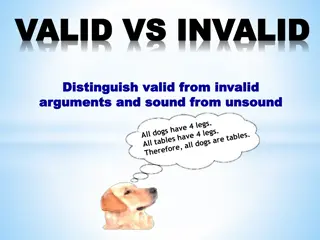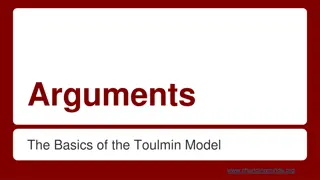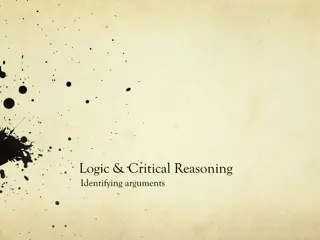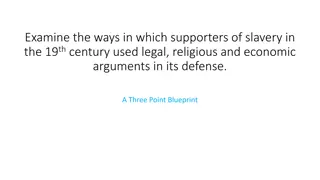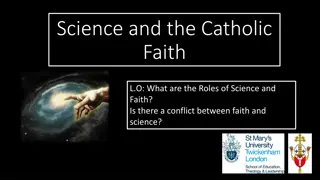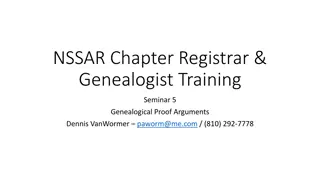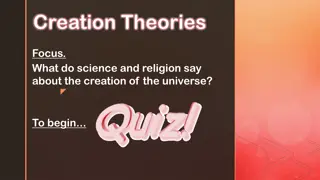Exploring Young Earth Creationism and Biblical Arguments
Delve into the intricate beliefs of Young Earth Creationism (YEC) as it posits a literal interpretation of the Genesis creation account. Understand the challenges and justifications behind the idea that God created an Earth of immense youth within a short timeframe. Explore biblical passages that supporters of YEC cite to reinforce their viewpoint, linking humanity's origins to the very beginning of time.
Download Presentation

Please find below an Image/Link to download the presentation.
The content on the website is provided AS IS for your information and personal use only. It may not be sold, licensed, or shared on other websites without obtaining consent from the author. Download presentation by click this link. If you encounter any issues during the download, it is possible that the publisher has removed the file from their server.
E N D
Presentation Transcript
BIG BIG& &small QUESTIONS OF THE FAITH small JASON S. DEROUCHIE, PHD ASSOCIATE PROFESSOR OF OT AND BIBLICAL THEOLOGY BETHLEHEM COLLEGE & SEMINARY WWW.DEROUCHIE-MEYER.ORG BETHLEHEM BAPTIST CHURCH, 2016
QUESTION Why do you hold to YEC, believing that God created a mature earth in in six 24-hour periods in a literal week and that the earth is extremely young 6,000 10,000 earth-years old?
Potential Challenges to YEC Potential Challenges to YEC Can we really have day and night without the sun? Couldn t day just mean an indefinite period of time? Even if you have a seven day work-week presented, don t the literary features of the text suggest it is not a chronological, historical presentation?
What do you do with the chronological challenges between Genesis 1 2? Could so much have really happened on Day 6? Day 7 identifies the week as heavenly, not earthly, time, and it never ends, so we shouldn t consider Gen 1:1 2:3 as detailing earthly time?
QUESTION Why do you hold to YEC, believing that God created a mature earth in in six 24-hour periods in a literal week and that the earth is extremely young 6,000 10,000 earth-years old?
YEC: Biblical Arguments YEC: Biblical Arguments Gen 1:1 2:3 places humanity within the first week of creation.
The NT closely associates the history of Genesis 2 4 with the beginning of the world. o Jesus saw the institution of marriage as being closely linked to the beginning of creation (Mark 10:6; cf. Matt. 19:4, 8; see Gen. 2:21 25). Mark 10:6. From the beginning of creation, God made them male and female.
o Jesus declared that Satans murderous activity (not just tendencies) through his deception of Eve was closely associated with the beginning of creation (John 8:44). John 8:44. You are of your father the devil, and your will is to do your father s desires. He was a murderer from the beginning, and has nothing to do with the truth, because there is no truth in him. When he lies, he speaks out of his own character, for he is a liar and the father of lies.
o Jesus linked this murderous, sinful activity with the promise that the offspring of the woman would stand in friction with the serpent and his offspring (1 John 3:8). 1 John 3:8. Whoever makes a practice of sinning is of the devil, for the devil has been sinning from the beginning. The reason the Son of God appeared was to destroy the works of the devil. Gen 3:15. I will put enmity between you and the woman, and between your offspring and his offspring; he shall bruise your head, and you shall bruise his heel.
o Jesus saw the first human experience of tribulation as being located near the beginning of creation (likely referring to Cain s killing of Abel) (Mark 13:19; cf. Matt. 24:21; see Gen. 4:8). Mark 13:19. For in those days there will be such tribulation as had not been from the beginning of creation that God created until now, and never will be.
o Jesus placed the martyrdom of Abel near the foundation of the world (Luke 11:49 50; cf. Matt. 23:35; see Gen. 4:8). Luke 11:49 50. The Wisdom of God said, I will send the prophets and apostles, some of whom they will kill and persecute, 50so that the blood of all the prophets, shed from the foundation of the world, may be charged against this generation, from the blood of Abel to the blood of Zechariah, who perished between the altar and the sanctuary.
o The writer of Hebrews considered the foundation of the world to be the conclusion of the 6thday, placed humanity s rebellion (for which Jesus suffered) very near this time, and contrasted this foundation with the end of the ages realized in the work of Christ (Heb. 4:3 4; 9:25 26). Heb. 4:3 4. For we who have believed enter that rest, as he has said, As I swore in my wrath, They shall not enter my rest, although his works were finished from the foundation of the world. 4For he has somewhere spoken of the seventh day in this way: And God rested on the seventh day from all his works. Heb. 9:25 26. Nor was it to offer himself repeatedly, as the high priest enters the holy places every year with blood not his own, for then he would have had to suffer repeatedly since the foundation of the world. But as it is, he has appeared once for all at the end of the ages to put away sin by the sacrifice of himself.
Genesis linear genealogies in chs. 5, 11 point to a recent humanity. o Some biblical genealogies are selective (Matt 1:1; 1:2 17). Matt 1:1. The book of the genealogy of Jesus Christ, the son of David, the son of Abraham. o The linear genealogies in Genesis 5 and 11 are of a different type and suggest a recent humanity.
Gen. 5:311. When Adam had lived 130 years, he fathered a son in his own likeness, after his image, and named him Seth. 4The days of Adam after he fathered Seth were 800 years; and he had other sons and daughters. 5Thus all the days that Adam lived were 930 years, and he died. 6When Seth had lived 105 years, he fathered Enosh. 7Seth lived after he fathered Enosh 807 years and had other sons and daughters. 8Thus all the days of Seth were 912 years, and he died. 9When Enosh had lived 90 years, he fathered Kenan. 10Enosh lived after he fathered Kenan 815 years and had other sons and daughters. 11Thus all the days of Enosh were 905 years, and he died. Note 1: The father-son/grandson/great-grandson relationships are shown elsewhere to be just that: Adam with Seth (Gen 4:25); Noah with Ham, Shem, Japheth (6:10); Terah with Abraham (11:31).
Gen. 5:311. When Adam had lived 130 years, he fathered a son in his own likeness, after his image, and named him Seth. 4The days of Adam after he fathered Seth were 800 years; and he had other sons and daughters. 5Thus all the days that Adam lived were 930 years, and he died. 6When Seth had lived 105 years, he fathered Enosh. 7Seth lived after he fathered Enosh 807 years and had other sons and daughters. 8Thus all the days of Seth were 912 years, and he died. 9When Enosh had lived 90 years, he fathered Kenan. 10Enosh lived after he fathered Kenan 815 years and had other sons and daughters. 11Thus all the days of Enosh were 905 years, and he died. Note 2: The specificity of ages seems due to the messianic and missiological purpose of Genesis. God preserved the line of hope in every generation from Adam to Noah, from Shem to Terah, and from Abraham to Israel.
Gen. 5:311. When Adam had lived 130 years, he fathered a son in his own likeness, after his image, and named him Seth. 4The days of Adam after he fathered Seth were 800 years; and he had other sons and daughters. 5Thus all the days that Adam lived were 930 years, and he died. 6When Seth had lived 105 years, he fathered Enosh. 7Seth lived after he fathered Enosh 807 years and had other sons and daughters. 8Thus all the days of Seth were 912 years, and he died. 9When Enosh had lived 90 years, he fathered Kenan. 10Enosh lived after he fathered Kenan 815 years and had other sons and daughters. 11Thus all the days of Enosh were 905 years, and he died. Note 3: The ages in the genealogies point to humanity being around 6,000 years old.
Gen. 5:311. When Adam had lived 130 years, he fathered a son in his own likeness, after his image, and named him Seth. 4The days of Adam after he fathered Seth were 800 years; and he had other sons and daughters. 5Thus all the days that Adam lived were 930 years, and he died. 6When Seth had lived 105 years, he fathered Enosh. 7Seth lived after he fathered Enosh 807 years and had other sons and daughters. 8Thus all the days of Seth were 912 years, and he died. 9When Enosh had lived 90 years, he fathered Kenan. 10Enosh lived after he fathered Kenan 815 years and had other sons and daughters. 11Thus all the days of Enosh were 905 years, and he died. Note 4: Even if son at at times means grandson, or great-grandson (as can happen in Scripture), the specificity of ages counters the likelihood of gaps.
But doesnt Luke 3:36 indicate a gap in Gen 11:12 between Arpachsad and Shelah? Genesis 11 Luke 3 Shem Shem Arpachsad Arphaxad ? Cainan Shelah Shelah Eber Eber Peleg Peleg Reu Reu Serug Serug Nahor Nahor Abram Abraham Note 1: This is possible, but it would only indicate a single gap, not more.
But doesnt Luke 3:36 indicate a gap in Gen 11:12 between Arpachsad and Shelah? Genesis 11 Luke 3 Shem Shem Arpachsad Arphaxad ? Cainan Shelah Shelah Eber Eber Peleg Peleg Reu Reu Serug Serug Nahor Nahor Abram Abraham Note 2: However, it is also possible that (1) a statement regarding Kenan was originally part of Gen 5 and accidentally dropped out during years of copying or (2) that Cainan was mistakenly added into Luke 3.
But doesnt Luke 3:36 indicate a gap in Gen 11:12 between Arpachsad and Shelah? Genesis 11 Luke 3 Shem Shem Arpachsad Arphaxad ? Cainan Shelah Shelah Eber Eber Peleg Peleg Reu Reu Serug Serug Nahor Nahor Abram Abraham Note 3: Regardless, we are still not talking about massive gaps. The ages in Genesis 5 and 11 suggest a young humanity, and if God made humanity at the beginning in the first week of creation, the universe is young in earth years.
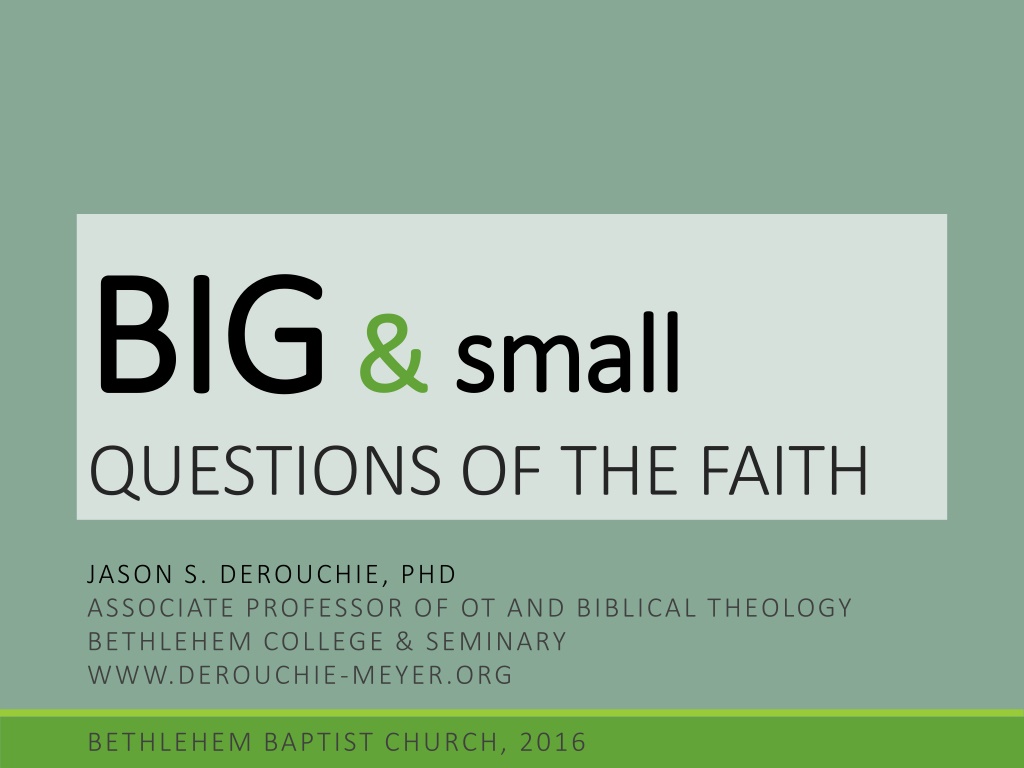
 undefined
undefined



 undefined
undefined








